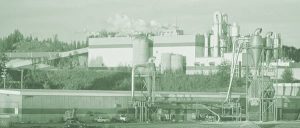
Quesnel River Pulp @westfraser.com
QUESNEL – West Fraser Timber Co. Ltd. posted earnings of $105 million on $1.705 billion in revenue in the second quarter for fiscal 2024.
West Fraser, which has operations in Williams Lake, Quesnel, Smithers, Chetwynd, Fraser Lake and 100 Mile House, had sales exceed the $1.627 billion in the first quarter, and earnings jumped from $35 million in the first three months of the year.
“Once again our North American OSB, plywood and other engineered wood products demonstrated strong results and the value of our product diversification strategy,” says President and CEO Sean McLaren. “Q2-24 benefited from relative strength in new home construction demand that carried over from the prior quarter. Conversely, we continued to experience demand softness in our North American lumber business, particularly for SYP lumber with its greater relative exposure to repair and remodelling applications.
“Despite near-term demand uncertainty across some of our end-markets, the team at West Fraser will continue to work diligently, executing on our strategy of investing capital to modernize mills and lower costs, returning excess capital to shareholders when it is prudent to do so, and maintaining financial flexibility through a strong balance sheet. While it is difficult to see catalysts for a near-term demand recovery across our industry, we remain steadfast in our approach to navigating uncertainty. We continue to realize the financial benefits from the recent closures of some of our higher-cost lumber mills and will continue to focus on optimizing our portfolio of assets to lower costs and create a more resilient organization.”
Several key trends that have served as positive drivers in recent years are expected to continue to support medium and longer-term demand for new home construction in North America.
The most significant uses for their North American lumber, OSB and engineered wood panel products are residential construction, repair and remodelling and industrial applications. Over the medium term, improved housing affordability from stabilization of inflation and interest rates, a large cohort of the population entering the typical home buying stage, and an aging U.S. housing stock are expected to drive new home construction and repair and renovation spending that supports lumber, plywood and OSB demand.
Over the longer term, growing market penetration of mass timber in industrial and commercial applications is also expected to become a more significant source of demand growth for wood building products in North America.
Business Examiner Staff
